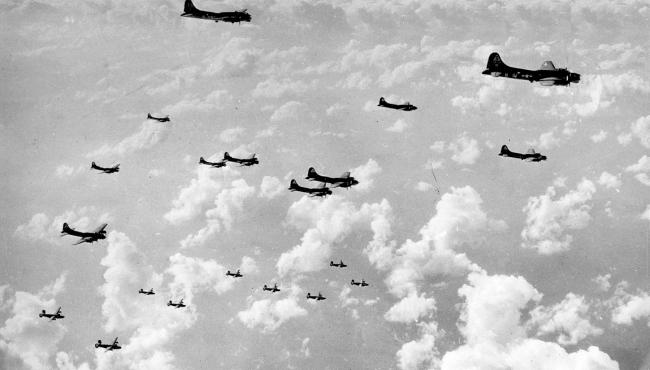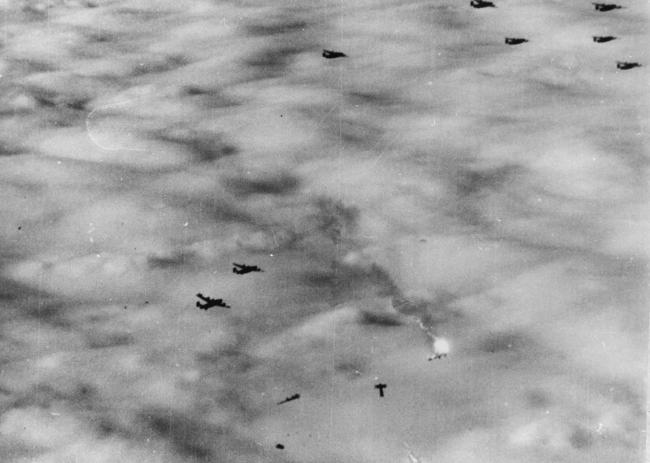42-31193 Little Boots

Uploaded
Object Number - UPL 28347
Delivered Cheyenne 29/9/43; Gt Falls 14/10/43; Scott 21/10/43; Assigned 615BS/401BG [IY-B] Deenethorpe 4/11/43; Missing in Action Frankfurt 29/1/44 with Capt. Robert Beers, Co-pilot: Howard Byrne, Navigator: Harry Gershon, Bombardier: Bill Ritch, Flight engineer/top turret gunner: Clarry Young (5 Prisoner of War); Radio Operator: Nunzio Paola, Ball turret gunner: Allen Craft, Waist gunner: Franklin Grigg, Waist gunner: Ken Lynn, Tail gunner: John Turvey (5 Killed in Action); enemy aircraft KO’d #3, wing on fire, crashed Worms, Ger; Missing Air Crew Report 2274. LITTLE BOOTS.
Connections
See how this entry relates to other items in the archive by exploring the connections below.
Units served with

- Unit Hierarchy: Group
- Air Force: Eighth Air Force
- Type Category: Bombardment

- Unit Hierarchy: Squadron
- Air Force: Eighth Air Force
- Type Category: Bombardment
People
- Military/Civilian/Mascot: Military
- Nationality: American
- Unit: 401st Bomb Group 615th Bomb Squadron
- Service Numbers: 06966455
- Highest Rank: Staff Sergeant
- Role/Job: Waist Gunner
- Military/Civilian/Mascot: Military
- Nationality: American
- Unit: 401st Bomb Group 615th Bomb Squadron
- Highest Rank: Captain
- Military/Civilian/Mascot: Military
- Nationality: American
- Unit: 401st Bomb Group 615th Bomb Squadron
- Highest Rank: Captain
- Role/Job: Pilot

- Military/Civilian/Mascot: Military
- Nationality: American
- Unit: 401st Bomb Group 1st Scouting Force 384th Fighter Squadron 385th Fighter Squadron Scouting Force (Experimental) (SFX)
- Service Numbers: O-748548
- Highest Rank: Captain
- Role/Job: Co-Pilot / Fighter Pilot
- Military/Civilian/Mascot: Military
- Nationality: American
- Unit: 401st Bomb Group 615th Bomb Squadron
- Highest Rank: Second Lieutenant
- Role/Job: Co-Pilot
Places

- Site type: Airfield
- Known as: Benefield
Missions
- Date: 21 January 1944

- Date: 11 January 1944

- Date: 31 December 1943

- Date: 30 December 1943

- Date: 5 December 1943
Events
| Event | Location | Date | Description |
|---|---|---|---|
|
Other Failed to Return (FTR) |
France | 29 January 1944 |
Revisions
I have updated the names of the crewmen. The nicknames I was unaware of (like Clarry for Clarence, I have left alone).
Dave Osborne, B-17 Fortress Master Log / MACR 2274 / Paul Andrews, Project Bits and Pieces, 8th Air Force Roll of Honor database
